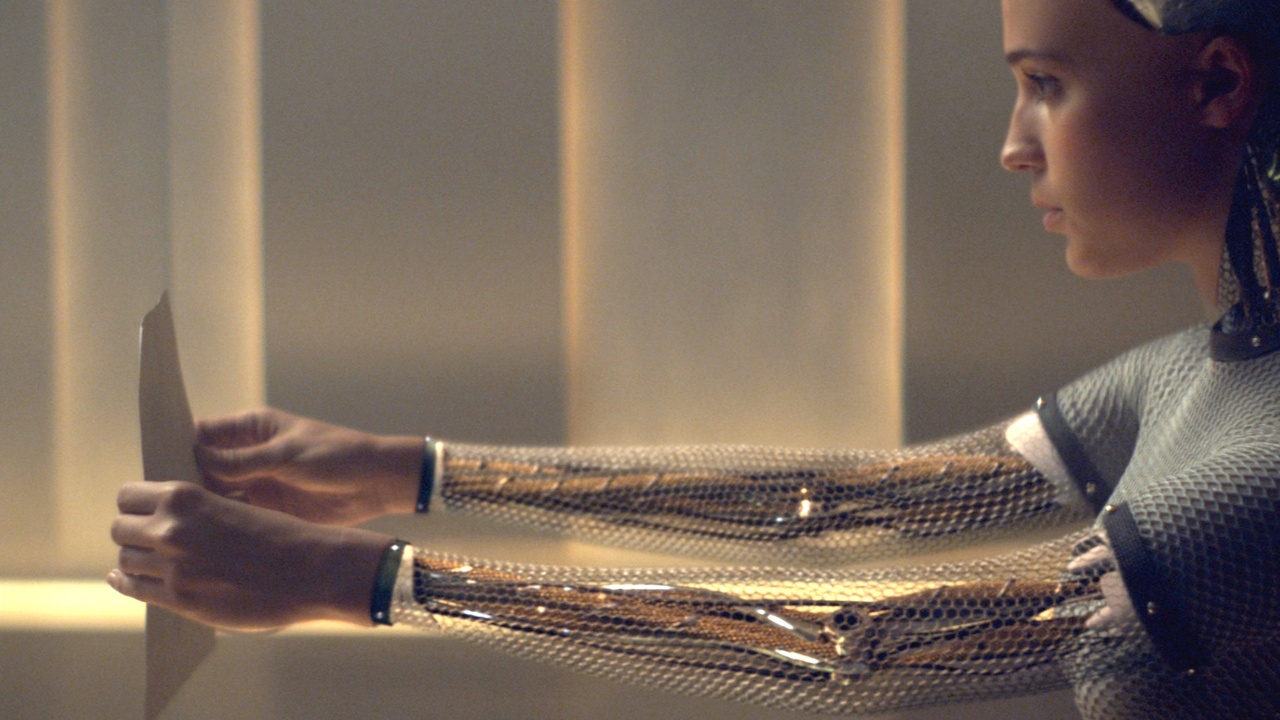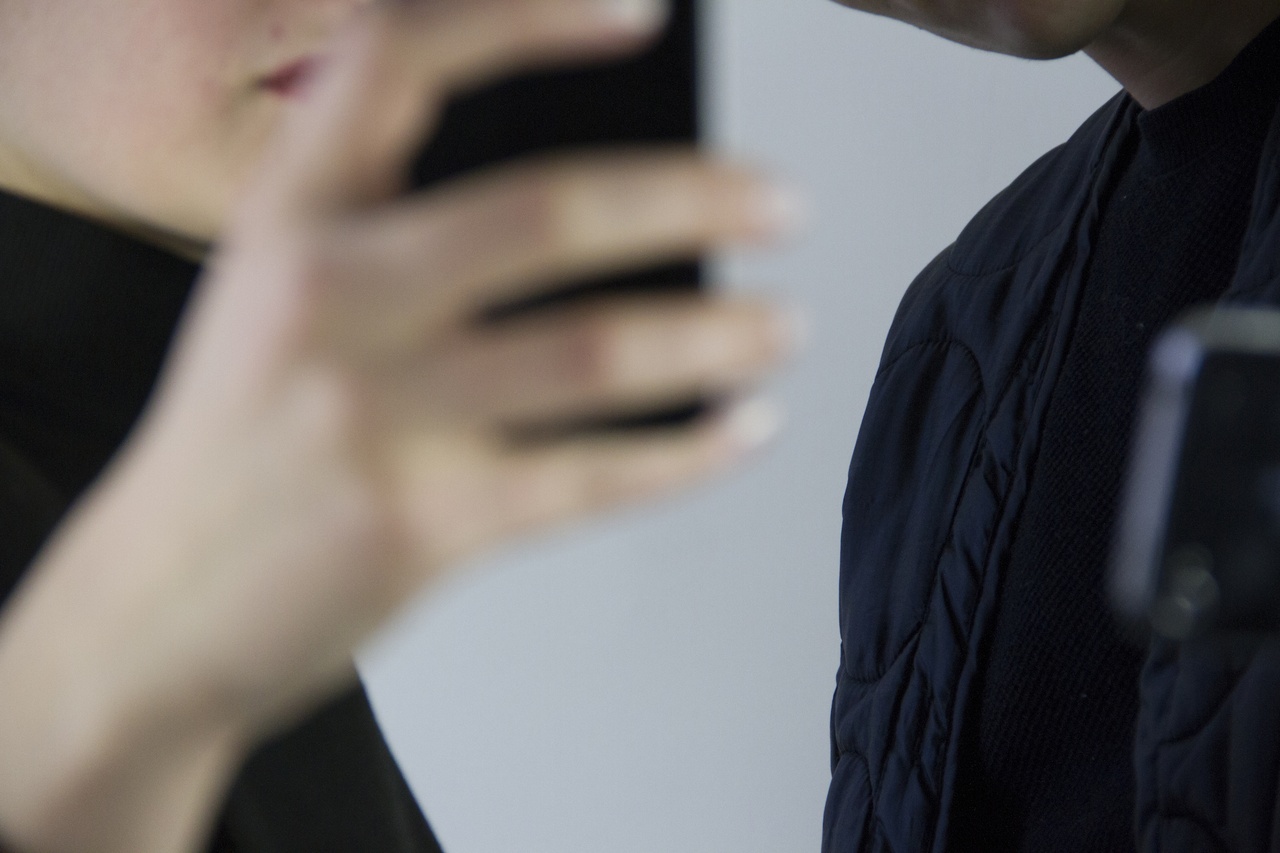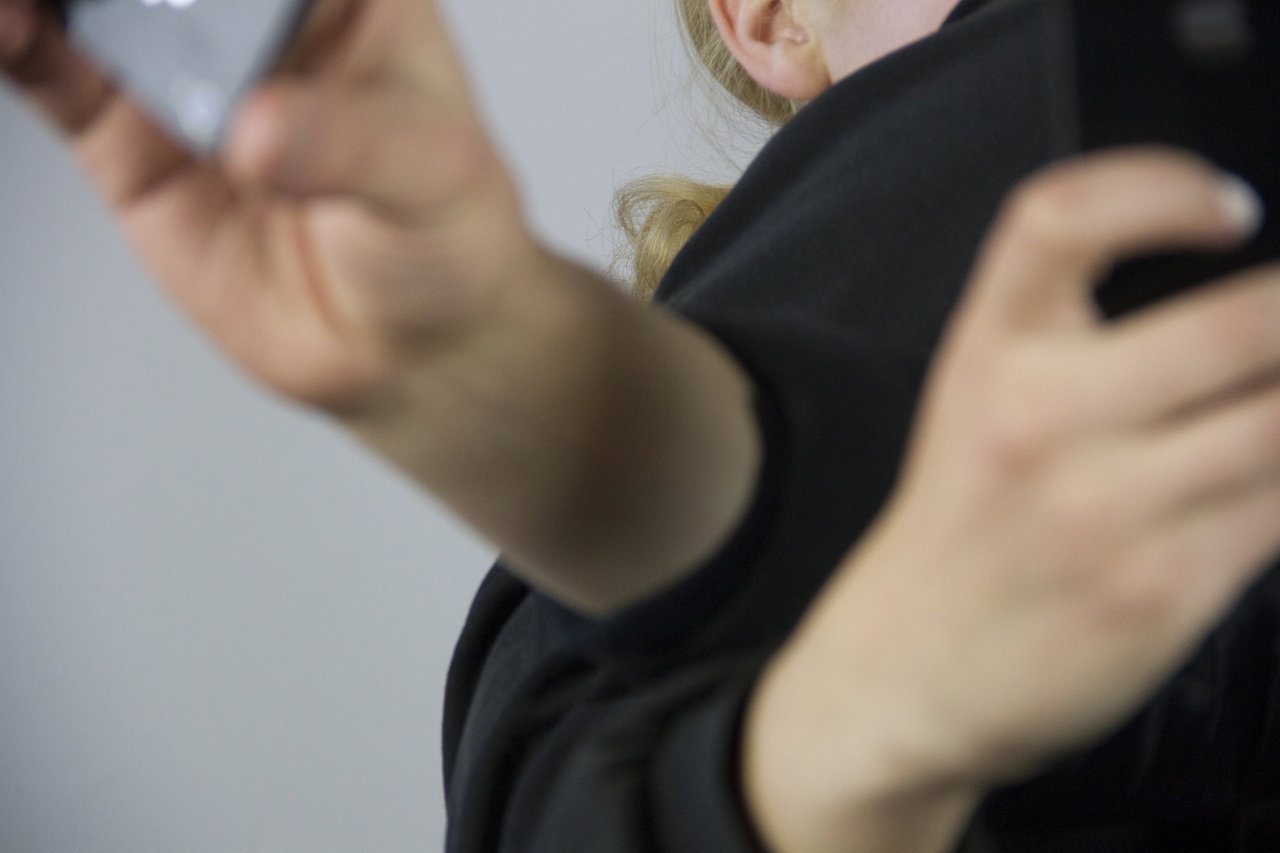Social Life by Hannah Black

Alex Gardland, "Ex Machina", 2015, film still.
1 Art and its theorization partly rely on the production of the effect of novelty, strip-mining implausibly new truths from exhausted and exhausting material. Under this necessity, the post-Internet Internet – the Internet set loose from its putative freedoms and now arranged in life-like fashion around the mega-functions of work and self-maintenance as structured by Facebook, Google, Tumblr, Twitter, etc. – appears to provide unprecedented ways of disseminating and encountering text and images. Because we are yoked to at least novelty’s form, if not its reality, let’s admit that it has enabled people to forge communities of interest that transcend place, although these communities tend to fall along existing lines of class, race, and gender, or to coalesce around identifications otherwise demarcated offline.
In theory, there is something free/freeing about Twitter, in that it collectivizes feeling, and allows us to read fragments of the totality of feeling. In theory, there is something free/freeing about the NSA’s total recording of all language, of every word said in love or anger or boredom. Most people do not mind if a machine records all their words like an attentive parent or friend and renders language concretely infinite and searchable. What people mind is being hurt or being killed, or being made to feel ugly, or being made poor and then being punished for it.
Social media has made possible networked uprisings and drawn together disparate struggles toward horizons of reform, revolution, identity, or survival. At the same time, the accumulation of social data in the form of online messages and pronouncements has provided a new vector for acts of violence as old as the state: surveillance, criminalization, incarceration, etc. These platforms are of course also value-producing and attempt the direct conversion of sociality into profit. Like the capitalist dream of robot workers, the direct conversion of life into value is a fantasy about the full negation of labor.

Lindsay Lawson, "7550", 2013, courtesy: Gillmeier Rech, Berlin.
It is perhaps a coincidence, and perhaps not, that many directly political-organizational uses of social media (the Cairo uprisings that deposed Mubarak and post-Ferguson resistance to anti-black state violence in the US, to give two important examples) have appeared at roughly the same time as the effective disappearance of the Singularity-yearning, anonymized, avatar-led, and self-consciously libertarian Web that was once the dream of US tech. It is the corrupted and corporate Internet we have now, and not the fantasy-free Internet that never was, that has brought about startling and moving uses of the form. Now the Internet has come to look more like the non-Internet world: structured by the demands of profit, violent, strange, funny, awful, beautiful, full of desire and the alienation of desire … everything that the world is. There is no technology, and there never will be a technology, that does anything more than mirror, reproduce and at most concentrate and intensify the social relations in which it was produced.
Many still persist in valorizing anonymity and privacy online, as if, with these conditions intact, the Internet will remain or become a safe space for acts of politics or survival. This idea relies on an under-interrogated conception of the political as arising from autonomy and agency. Perhaps consideration of the histories of anti-colonial struggle and slave uprisings, to give two cases where acts of transformative resistance happened without any meaningful top-down recognition of autonomy, privacy, or even personhood, might complicate this understanding of enclosure. People’s willingness to share intimate details of their lives in collective online spaces means that the dominant critiques of social media, often centered around issues of privacy, simply end up scolding the messy, over-disclosing users for being bad political subjects. Instead it might be more interesting to register the ways in which the existing politics expressed on these platforms already go beyond and complicate ideas about privacy, the commons, and so on.
There is a strange and basically racist disconnect between white bourgeois discourses of privacy/surveillance and the ongoing, always, and forever violence of racialization and gender domination. WikiLeaks-style disclosures will not become politically meaningful until they are fused with struggles against state violence as such, for example the struggles of black people in the USA who have the unenviable (but not unique) honor of having a police force whose predominant purpose is to attack, disperse, and render impossible black sociality, even as its incredible, indomitable continuance circulates as cultural and intellectual material.
The foundational racism and misogyny of capitalist society has yet to be fully acknowledged even among many communists, anarchists, and other radicals; it is to this mystifying audience of frenemies that I make the obvious point that emails can and perhaps should be encrypted, but the body remains often painfully legible, and the conditions of illegibility are punitive. Social control of racialized and feminized people is not only a matter of state agents but of, for example, the men in the street or the men in your life who are all “not all men” but all seem to have learned the same script, even down to you’re overreacting and hey baby. What do I care that you’re not a cop if you act like one?
Twitter hashtags on sexual violence, anti-blackness, and the like highlight and trouble the shame of these diffuse forms of social control, and their eerie procedural similarity. The hashtags are also heavily pedagogical and formally constraining, perhaps like all collectivizations of experience, but platforms like Twitter and Tumblr are extraordinarily capable of producing critiques almost as fast as they produce new norms. Somehow the technological reproduction of the social has produced a weird mutation: people I thought would rather die than listen to black women are listening to black women. Maybe this too is not new, but I have personally never lived it before. Social media has fused together and concretized the social. In its rearrangement of the social, or at least how the social moves, or the speed and connectivity of its movement, social media has predictably gathered together all the existing tensions, possibilities, and impasses of society. I think that it has produced nothing substantially new in any real sense apart from that this array of difference and multiplicity, homogeneity and conformism, now confronts us as such not only in the abstract or in theory but concretely: search for a word, phrase, or hashtag on Twitter and you too can scroll through the permutations of personhood expressed in evocative or clumsy phrases, repetitive and surprising, embarrassing or touching, all the things a person can be, across many, many people.
I also note that, just as black social life surges up and insists on itself in the cities where many black people can’t even walk in the street without fear of harassment, platforms like Vine and Twitter become stages for the continuation of this insistent life, and for the working through of the multiplicity of its positions and possibilities. The platforms were not made for that purpose; that’s just what has happened.

Lindsay Lawson, "7577", 2013, courtesy: Gillmeier Rech, Berlin.
The massive collation of the social represented by social media, a Borges-like infinite library of text and images, makes visible the extremely faint possibility that we will one day be legible to each other in and through and because of our difference, or that we will connected by something other than capital flows, or that we will be disconnected and become multiple again without losing technical expertise, or whatever the hope of your choice. In all this I think it’s important to remember that the network is not new. The global trade routes that concretized themselves in experience as the transatlantic slave trade and coagulated like blood in the colonies were already a (social) network. There was global exchange even before the global domination of capitalism. Might language itself one day mediate between us, instead of capitalist value? On the corporate and siloed Internet, this dream shines in the dark, perhaps no more plausible than before, but at least given a rough form. In art, in labour, in social media, capital attempts to directly commodify human existence, and it may yet destroy itself by succeeding.
2 In a video I made recently, I explicitly asked viewers to understand the work as a technology of love. I know that art can also be a technology of hate, or indifference, or whatever. In any case, love is a word I use to describe the more fissured and painful experiences of my life, as well as the best, or what I’m saying is that I use love to describe experiences that were a lot of things at the same time. The video’s claim was more that art might be understood as a technology of relationship. Don’t look at me, look at my work! And yet as much as my work expresses various kinds of longing that I have, various registers of longing, I remain naively amazed that it has never really helped me meet them. I cannot live as my work, even though my work also lives as me among others.
Scientists as much as artists have been working on technologies of relationship at least since the 1950s, when Harry Harlow and his colleagues attempted to create synthetic parents for baby monkeys, using the famous pairs of wire mothers and cloth mothers. The experiments seemed to show that the monkeys so vastly preferred the snuggly cloth mothers to the milk-giving wire mothers that it was as if, Harlow wrote, being fed is just a pretext for being held. These experiments showed that it is not possible to mechanize the processes of caring for a baby mammal if you wish the animal to grow up to be able to live among others or experience pleasure.
The bereft baby monkeys press down on the complicated desire I have to give and receive love, the times I know I failed to give love, my desire to be alone, my desire to never be alone. Meeting a new person, I realize that I have two fears: that they will not like me at all, and that they will like me too much. There is the fear of not being understood and there is the fear of being understood too well. There is the problem of how to keep liking life. The problem of how to do so under the conditions of life’s abjection as non-value or its commodification as labor or as art.
Social media aggregates existing capacities for relationship, and in this way it mechanizes or industrializes or subsumes relationship. Some technologists are still attempting to develop robots capable of relating to people. Because relating is labour-intensive, dangerous, and full of mysterious inputs, these robots are not very good. They are given the form of women, the form of pets, the form of servants, the form of writing. This may or may not mean that these categories have something in common. Both the machines made from an aggregate of social life and the machines made from its synthesis are tools to address and also monetize alienation.
With and against innovation, we develop new forms of proximity to make up for those we have lost or to sustain those that are constantly under threat. Intimacy remains necessary and hard to mechanize. That is either because it is irreducibly human or because the work of women or people who are like women is cheap or free at the point of service. Although each new platform is a new terrain, there is as yet no machine that can accurately synthesize whatever it is that animates the social. That remains the job of women, or of people who are like women.
When you aggregate the social for example on an app you also aggregate violence. Violence is not hard to mechanize. We already have robots who can do that. Violence is not outside the social. For now, violence is threaded all through. The police are a technology for the generalization of violence. So is the legal system. So are men. Everything is a technology for something. The robot is disappointing. It does not know how to behave. The artist does not know how to behave either, and she is not entirely sure what she is a technology for. Pacification? Critique? Love, like in her video?

Lindsay Lawson, "7267", 2013, courtesy: Gillmeier Rech, Berlin.
I don’t know what I’m looking for from other people, but whatever it is I keep going back for it. The regard of others, whether imagined or real, is a machine for intensifying or decreasing my reality. Survival mostly entails going through the pain of recognition, through the categories of gender and race. I show a photo of myself to a friend: “What do I look like? I don’t look like anything!” In the image I have a long, high-yellow face that signifies nothing or maybe it only signifies nothing because I can’t bear what it signifies. Race is an objective constraint on love. Or: love is a bourgeois category, a function of the myth of privacy. I think like this, taxonomically, structurally, like an astrologer. I search the world for signs of myself.
I scroll through Twitter and email at 4 a. m. because I have a feeling that I call “feeling alone.” I throw this feeling out into the world by typing it on my phone in the hope that it will die of exposure to others. When I wake the next day, I have forgotten what I thought I needed, but the record that I needed something remains.
Being read or misread is not the central problem. Reading and misreading, in an expanded sense, are among the first operations of love. The problem is the dominance of violence. The rich are guilty of our poverty. This is axiomatic. Natural language is guilty of the robot’s dumbness. There are no technologies of the social, though the social appears technologically, because attachment is non-technological, non-purposive. It’s impossible to really feel loved by something or someone that only gives me what I have already asked for.
Social life is fragmented by value. Badly translated between one kind of life and another, at times I try to make myself understandable to my enemies, and at times I become incomprehensible to my friends. A few days ago I said goodbye to someone I love and don’t know when I will see again. Then too I felt up against the hard limit of relations between people, which are also relations between things. Money is still the first and last definite thing.
How did something called language become separate from something called nature? In a different context, human names for things are also their secret essences. The possibility of this other life expresses itself directly in a cop car on fire and obliquely in the faces of my friends. The possibility of another life walks up to me in the street and asks for a dollar. I have yet to reach the level of technological development where I could understand all the ways this other life manifests. Robots cannot read us yet because we cannot read ourselves.
3 Sometimes she becomes disgusted with her use of phrases like one day or in communism or in the black feminist commune or whatever because it seems to disrespect the dead, and herself too, who will also die. Or is it true that everyone is always with us? The white theorists prescribe negation and mortification of the self; the black womanists prescribe self-value and survival. She wants neither to negate herself nor to experience herself as valuable: surely art has negated itself often enough; surely black women have felt the pain of being valuable often enough. She refuses to be grateful. She lives a life of sorts, fragmentary, unstable. Animated after all by enthusiasm/disappointment, perhaps she will never reconcile the necessity of living and its sadness, the happiness of living and its brute necessity.
Hannah Black is an artist and writer.
Image credit: 1. Alex Gardland. 2-4 Lindsay Lawson, courtesy: Gillmeier Rech, Berlin.
